Dance and Medicine
Pas De Deux
By Danielle Ofri
It was on a desolate winter evening that I escaped from Bellevue. I plunged the last IV of my day into someone’s vein and then hopped on an M-15 bus uptown, pressing my subway token into the slot with both anxiety and relief.
I was in the second year of my internal medicine residency training, the middle year, which is marked by what is charitably called a “dip” in motivation. More accurately, it is a pit, a chasm, an abyss, a Stygian marsh. Too far from the newness of internship, too bogged down to see the horizon of future possibilities that senior residents can sense, second-year residents slog through the endless year with their heads’ down in the muck of monotony. Second year is notorious for depression, doubts, and a generalized dreary outlook on life.
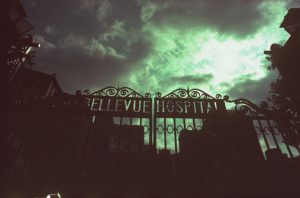 For me, second year was particularly bleak. Having extended medical school to seven years from the usual four in order to complete my PhD, and then continued straight through to residency in the same institution, I felt as though I were being buried alive in Bellevue Hospital. The final year of my decade of training seemed eons away, and I was overwhelmed with the drudgery of hospital life.
For me, second year was particularly bleak. Having extended medical school to seven years from the usual four in order to complete my PhD, and then continued straight through to residency in the same institution, I felt as though I were being buried alive in Bellevue Hospital. The final year of my decade of training seemed eons away, and I was overwhelmed with the drudgery of hospital life.
AIDs had saturated our training, and in those days before protease inhibitors and HIV “cocktails,” the wards of Bellevue were overflowing with patients my own age dying protracted and miserable deaths. Every day felt the same—legions of feverish, emaciated patients admitted from the emergency room, many with lives as ragged as the Kaposi sarcoma lesions that ulcerated their limbs, mouths, lungs, and intestines. There was a third-world feel to our existence, a soul-numbing tedium of affliction and despair. When the alarm shuddered me out of sleep each morning, I found myself paralyzed in the pre-dawn darkness, trapped in a tangle of grisly dream fragments and a penetrating dread of the upcoming day. I needed to escape.
The M-15 bus chugged through the evening traffic of First Avenue, past the Bellevue Men’s Shelter, that crumbling brick behemoth that was the starting point and ending point for so many of my patients. It rumbled past the medical school, where I’d spent innumerable hours in windowless classrooms memorizing details about the pentose phosphate shunt and microtubule organizing centers that had yet to contribute to a single clinical situation in my current life. We passed the United Nations, a gleaming tower that seemed worlds away from Bellevue, except when Tibetan hunger strikers were forcibly brought to our ER.
Wintertime was the worst. Not only was it the midpoint of the middle year, but the curse of Daylight Savings Time ensured that we would not glimpse sunlight for weeks on end. The cold weather drove the homeless into the hospital, and all of Bellevue seemed a fetid, overcrowded, wretched purgatory to which we were committed until the end of our residency…if ever that would arrive.
Sometime during the grim December depths, vague rumblings of a distant childhood desire poked plaintively into my consciousness. As a teenager, I had taken after-school dance classes. I remembered the pleasure of physical movement, the joy of accomplishment, though all that had been fettered shut throughout the straightjacket of college and medical school. The only physical challenges I experienced now involved hauling stretchers to radiology when there were no transporters available. In the midst of my current dispirited existence, my body seemed to be telling me something. Like a resurrected itch in a difficult-to-access spot, something in me ached to reach back to that experience.
Still unsure of even conceptualizing a plan, I’d plunked opened the Manhattan yellow pages and perused the long list of dance schools. There were schools of ballet, jazz, modern, ballroom, African, and Latin dance. Some were prestigious professional schools affiliated with major dance companies, some were independent studios, some were solo operations run by individual entrepreneurial dancers. Given the overwhelming selection, I was forced to apply the standard New York City decision-making algorithm: public transportation proximity. The school had to be exactly one subway or bus ride from Bellevue—no transfers or connections.
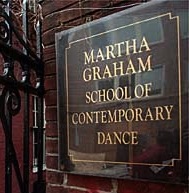 From my East Side location, the choices quickly boiled down to one, the Martha Graham School of Contemporary Dance. I had vague recollections of melodramatic poses, pelvic contractions, and overwrought eye shadow, but my time and energy were extremely limited so I couldn’t be picky.
From my East Side location, the choices quickly boiled down to one, the Martha Graham School of Contemporary Dance. I had vague recollections of melodramatic poses, pelvic contractions, and overwrought eye shadow, but my time and energy were extremely limited so I couldn’t be picky.
The bus deposited me near a run-down, three-story brick building on East 63rd Street. Zealous ivy blanketed the walls all the way to the roof, though someone had thoughtfully trimmed the leaves around the casement windows. Towering wrought-iron posts enclosed a weedy, overgrown garden. The edge of the more eastern one was bordered by the exit ramp from the Queensboro Bridge and cars spilled around the corner from Queens with commutational fervor.
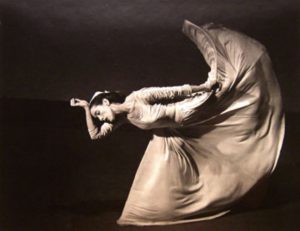 Inside the building was a sagging wooden staircase lined with pictures of Martha Graham. There she was in one poster—in a dramatically flowing gown, leg swept frighteningly high overhead in defiance of conventional anatomy, sending cascades of rippled cloth tumbling downward. There she was in another–-body crouched into a taut coil, eyes flashing with fiercely blackened outlines, hair amassed in towering bun, trembling with the rage of Ariadne. Further along was a company photo of dancers flying into the air with the innocent delight of Appalachian Spring—skirts billowing from captured air, arms aloft with muscular momentum. The camera had caught all fifteen dancers aloft in mid-air, and prosaic issues of floors and walls and gravity did not seem of concern.
Inside the building was a sagging wooden staircase lined with pictures of Martha Graham. There she was in one poster—in a dramatically flowing gown, leg swept frighteningly high overhead in defiance of conventional anatomy, sending cascades of rippled cloth tumbling downward. There she was in another–-body crouched into a taut coil, eyes flashing with fiercely blackened outlines, hair amassed in towering bun, trembling with the rage of Ariadne. Further along was a company photo of dancers flying into the air with the innocent delight of Appalachian Spring—skirts billowing from captured air, arms aloft with muscular momentum. The camera had caught all fifteen dancers aloft in mid-air, and prosaic issues of floors and walls and gravity did not seem of concern.
I tiptoed into the long narrow studio and parked myself in the far corner, hiding myself as best I could within the curve of the baby-grand piano. Thirty students in four long rows stretched and chatted, twisting legs and backs into what struck me as rather medically-risky positions. I reached down to touch my toes and something snapped in my back.
Someone evidently glimpsed the teacher in the hallway and everyone scurried to pull themselves up into proper first position—dancers ready to perform. The teacher sailed in, her sleek, six-foot two-inch frame clad in a glistening turquoise unitard. She looked to be in her fifties, with a regal bearing and an effortless elegance of movement. She diligently surveyed the students, examined their posture, adjusted a few stray limbs, then broke into an effervescent grin. “Good ev-en-ing,” she declared, with a precise European articulation. “Please be seat-ed.” I learned later that this was Armgard, the legendary German instructor of the evening class.
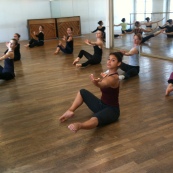 In precise synchrony, without any direction from the teacher, the students extended pointed toes to one side, swept their legs in curved circles and glided to the ground in an organized, graceful swoop. Startled, I quickly plopped myself onto the floor. The ancient wooden planks were polished smooth from a half-century of dancers’ bare feet.
In precise synchrony, without any direction from the teacher, the students extended pointed toes to one side, swept their legs in curved circles and glided to the ground in an organized, graceful swoop. Startled, I quickly plopped myself onto the floor. The ancient wooden planks were polished smooth from a half-century of dancers’ bare feet.
I waited patiently for instructions to descend from above; residency had trained me to follow orders well. I was looking forward to being instructed how to dance—this was the Level I class, after all.
No words came, however. With a slight nod from the teacher, the pianist creaked forward on his ancient roller bench and started up on the battered Steinway. Armgard stood silently while the students proceeded uniformly into a set of graceful first-position stretches. Precisely eight measures later they simultaneously remodeled their bodies into second position. On they went, without any instruction or cue, executing a complicated set of exercises, shifting to a new position every eight measures. I lurched my eyes toward the teacher pleading for help, but she was busy counting out the timing. The class moved seamlessly through the sequence, all in tune, all in line. Except for me.
I craned my neck to snatch clues from the students around me. Left arm extended, right leg folded inward. No, now the left leg was folded, right leg straight, torso extended forward. Then back pulled upwards, arms overhead. My limbs flailed liked a disoriented octopus as I tried to imitate my classmates. The massive wall of mirrors reassured me that I looked as ridiculous as I felt. There was no place to hide.
The first exercise finished, Armgard turned to the pianist. “Could you do something a bit Mozart? A minuet, perhaps?” And the class, once again, launched into a stunningly beautiful set of exercises, without any guidance.
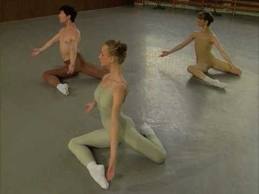 I had been told this was Level I. Where were the instructions? Where was the gentle guidance from the teacher? This was worse than my first day of internship or even the first day of kindergarten. I wanted to shout out, ‘I am actually a doctor! In real life I am a professional who is accorded responsibility over people’s lives.’
I had been told this was Level I. Where were the instructions? Where was the gentle guidance from the teacher? This was worse than my first day of internship or even the first day of kindergarten. I wanted to shout out, ‘I am actually a doctor! In real life I am a professional who is accorded responsibility over people’s lives.’
But my silent entreaties stuttered forlornly onto the worn wooden floor. Everyone else was dancing.
Armgard stopped to correct a student in the second row. “Isn’t it remarkable that God gave us two legs instead of one,” she said. “Now wouldn’t it be helpful if you used both of them in the grande plié?”
Later on in the class, as things grew more complicated, Armgard began to call out directions. It was hopeless for me, as the music and movement swirled faster than my brain could possibly process. There were far too many limbs to keep track off, and none of mine seemed to be anywhere near the right places at the right time. Armgard was busy repeating her instructions in French, Spanish, and Portuguese as I sank into horrible humiliation. She called out “right” and “left” in Japanese and then Korean, while the pianist spun out seamless variations on Shubert, Bach, Broadway tunes, and the occasional Mick Jagger song that I suspected Armgard didn’t recognize.
After class I dashed out of the building, barreling through the crowd of leotard-clad dancers toward the beckoning anonymity of First Avenue so that no one would see my quivering eyes. I don’t think I cried even on the first day of kindergarten, but now I was biting my lips to keep back the tears. A doctor, I told myself. You’re a full-fledged doctor. With a PhD to boot. My throat trembled nevertheless and threatened to unleash a deluge.
The bridge traffic hurtled across 63rd Street—cars honking, buses careening between lanes, taxis screeching to pick up fares. Bicycle messengers swooped between the cars with dizzying disdain for their own human lives, much less anyone else’s. A lone traffic cop was inserted into the mess of horns and tires and exhaust fumes, trying to sustain order.
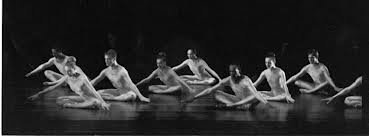 It’s just a lousy dance class, I insisted. Probably no one else in that studio would know how to treat diabetic ketoacidosis, right? None of those long-limbed, double-jointed creatures could sink a central line in the jugular vein without dropping a lung, right? But the vision of the class as a single supple organism delicately descending into a unified plié, trickled over me, cinching my breath with its beauty. Nothing at Bellevue was that beautiful. How could I even think to bring my clomping self, pockets stuffed with ungraceful, unbeautiful, Bellevue paraphernalia, into that same space?
It’s just a lousy dance class, I insisted. Probably no one else in that studio would know how to treat diabetic ketoacidosis, right? None of those long-limbed, double-jointed creatures could sink a central line in the jugular vein without dropping a lung, right? But the vision of the class as a single supple organism delicately descending into a unified plié, trickled over me, cinching my breath with its beauty. Nothing at Bellevue was that beautiful. How could I even think to bring my clomping self, pockets stuffed with ungraceful, unbeautiful, Bellevue paraphernalia, into that same space?
I was sure that back in the studio, the teacher was shaking her head in dismay. The other class members were probably snickering in the dressing room. Martha Graham, so elegantly captured in those posters, was probably mourning the decline of her school’s artistic standards.
The coarse pavement slapped against my feet as I stomped down First Avenue. I would never, ever subject myself to such embarrassment again. The closest I would come to the dance would be as a holder of a ticket stub at Lincoln Center, thank you very much.
The next morning I awoke with a nettled hangover of humiliation. It lumbered along with me as I rounded on my miserable, dying patients. I would never return to that building on East 63rd Street.
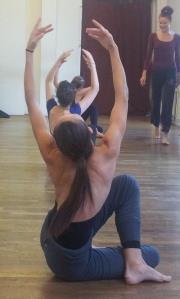 But then the startling grace of thirty dancers unfurling their left arms skyward, their gaze tipping off the edges of their fingertips, would catch me in the middle of drawing blood and my breath would momentarily halt. Then my reflection in that unforgivingly expansive mirror would pop back at me, my arms and legs straggling like overcooked spaghetti and I’d peevishly return to my blood draw.
But then the startling grace of thirty dancers unfurling their left arms skyward, their gaze tipping off the edges of their fingertips, would catch me in the middle of drawing blood and my breath would momentarily halt. Then my reflection in that unforgivingly expansive mirror would pop back at me, my arms and legs straggling like overcooked spaghetti and I’d peevishly return to my blood draw.
For two days I wrestled with this queer juxtaposition of sensations. The harder I tried to purge the vestiges of humiliation, the more persistently these longings for beauty nudged forward.
Slowly, oddly, it became clear: I wanted to go back.
Never before had I felt a desire to return to a scene of such mortification, but now I wanted to go back. I wanted that beauty. If I were to survive Bellevue, I needed that beauty.
I gathered up my shaky ego, pulled on the leotards that didn’t hide a damn thing, and dragged myself back. The second class was still a struggle, but one or two positions from the previous class felt familiar. I recognized the curvature of one arm and managed to get mine there before the movement was entirely over. By the third plié I caught up to the music. By the fourth I was there with the rest of the class, my body lowering with the group. In the mirror I caught a peek of the class easing downward and then pulling up, the space above our heads expanding in unison, then contracting. The pianist’s fingers softened the notes on the plié, then built them up on relevé. The choreography and the architecture, the music and the dancers—they interwove to create something that I couldn’t describe. Something that gave me a peculiar ache in my chest, an ache that was somehow soothing in its strain, an ache of desire for this delicacy.
I attended class the following week, amazed that I could manage a few of the steps. The long gray days at Bellevue seemed to move a few degrees more quickly. Even though the evening classes—90 minute lesson, plus commuting each way—added hours to my already long day, it was the only thing that kept my head above the depressing waters of illness and death.
Each day, as soon as I completed the last task on my scut list, I would dash out of Bellevue with leotards under my scrubs. Exhaustion was my permanent companion during that second year of residency and I would usually fall asleep on the M-15 bus going uptown, but my eyes would open when I’d bring myself into the lush aesthetic of the Graham studio. Sleekly clad in shimmering leotards, hair gracefully swept back, the dancers were the paragon of elegance to me after a full day with my shaggy, sleep-deprived hospital colleagues. The students casually stretched their long limbs in the narrow hallways chatting in Italian, German, or Korean. The topics of discussion were Julliard scholarships and Bolshoi performances, not potassium levels or sputum smears. The frenetic dissonance of Bellevue would melt away as the music began and I would sink gratefully into first position.
 I began to attend class regularly, and the movements that had so discombobulated me on that first day now began to grow familiar. As I worked diligently to acquire this new language of movement, the days themselves grew longer; the permanent darkness of winter finally began to recede. The classes now started in daylight, and the sun would begin its descent while we were dancing. Each time the class sank into a plié, an extra beam of fading sunlight succeeded in traversing the room, and then would be shadowed off when the class rose up. The low-angled light cast gentle shadows from ‘Martha’s Garden’—the hodge-podge of shrubs and trees just outside of Studio I. Through windows now opened a crack, tendrils of the wall-climbing vines would snake their way inwards and dangle jauntily near the piano.
I began to attend class regularly, and the movements that had so discombobulated me on that first day now began to grow familiar. As I worked diligently to acquire this new language of movement, the days themselves grew longer; the permanent darkness of winter finally began to recede. The classes now started in daylight, and the sun would begin its descent while we were dancing. Each time the class sank into a plié, an extra beam of fading sunlight succeeded in traversing the room, and then would be shadowed off when the class rose up. The low-angled light cast gentle shadows from ‘Martha’s Garden’—the hodge-podge of shrubs and trees just outside of Studio I. Through windows now opened a crack, tendrils of the wall-climbing vines would snake their way inwards and dangle jauntily near the piano.
 Over the course of my second and third years of residency I attended class religiously. It took only a few weeks to become familiar with most of the basic movements, but I soon discovered that there was infinite depth to each one and understood why dancers trained for a lifetime. I also discovered that nature had endowed me with a body that could never do many of the things that Ms. Graham had envisioned. Toes pointing inwards, inflexible hip joints, stiff spinal vertebrae constituted my inheritance. Luckily for Martha though, she was dead, and could never witness my perversion of her technique.
Over the course of my second and third years of residency I attended class religiously. It took only a few weeks to become familiar with most of the basic movements, but I soon discovered that there was infinite depth to each one and understood why dancers trained for a lifetime. I also discovered that nature had endowed me with a body that could never do many of the things that Ms. Graham had envisioned. Toes pointing inwards, inflexible hip joints, stiff spinal vertebrae constituted my inheritance. Luckily for Martha though, she was dead, and could never witness my perversion of her technique.
I was intrigued by the other students in the class. Half were young dancers attempting to forge a career in performing arts. These were the ‘trainees’ who were officially enrolled in the Martha Graham program. They came from all over the world on student visas and attended class on artistic scholarships. Their superior abilities and professional aspirations were clearly evident.
In many ways, they were not that different than the interns and residents in my medical training program. The fierce—sometimes competitive—determination felt familiar, except that they were striving to master a physical and aesthetic domain instead of a medical one.
The rest of the students exhibited a different type of determination. The dedicated lay folk were teachers, interior designers, nurses, musicians, actors, even a physics professor. They ranged in age and body habitus across a blessedly normal spectrum. They were well aware that nothing short of divine intervention or creative orthopedic surgery would ever turn them into “real” dancers. Yet they were driven by a personal connection to dance for which the word “hobby” would not do justice. Many came every single day after work, even on Saturdays, devoting almost every hour of their free time to this pursuit. Partly, this was because of Armgard. Armgard was uncompromising in her expectations. She knew that every dancer, no matter his/her innate ability, could be pushed to a higher level and she respected the driving spirit of each one. There was one middle-aged fellow even more awkward than I. He could barely straighten his knees and he was bereft of any sense of musical timing. Yet he came day in and day out, unfazed by the legions of petite limber dancers around him. Armgard encouraged him as much as she did the students who were bound for the professional world. In Armgard’s class, we all felt like we were dancing.
Almost every dancer was outfitted with a unitard that Armgard sewed in her apartment—the same ones she sewed for the members of the actual Martha Graham dance company. I remember the surge of pride I felt when I finally got an Armgard unitard. I chose turquoise, the same color that Armgard had worn on my very first day. I could be a dancer too.
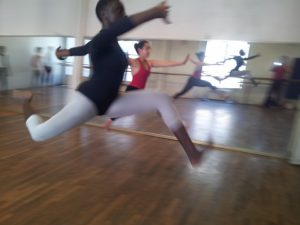 No matter how drained or reluctant I felt on any given night, Armgard’s class always left my body rippling with alertness, and that awareness pulled me to the studio every day after my hospital work was done, no matter how exhausted I was. My biggest regret was missing class when I was on call overnight. During those late nights I would sometimes find myself alone in one of the long empty halls of Bellevue. The temptation of open space would be too much. I would peek at each end to ensure that no one was coming and then let loose in my private studio. Chasse turns and triplets, high leaps and barrel turns, all the exuberant moves my small apartment could not accommodate. My stethoscope still has the gash it received when it catapulted out of my white coat during one of the more energetic spins. One janitor experienced an angina episode when his mop and my glissade collided.
No matter how drained or reluctant I felt on any given night, Armgard’s class always left my body rippling with alertness, and that awareness pulled me to the studio every day after my hospital work was done, no matter how exhausted I was. My biggest regret was missing class when I was on call overnight. During those late nights I would sometimes find myself alone in one of the long empty halls of Bellevue. The temptation of open space would be too much. I would peek at each end to ensure that no one was coming and then let loose in my private studio. Chasse turns and triplets, high leaps and barrel turns, all the exuberant moves my small apartment could not accommodate. My stethoscope still has the gash it received when it catapulted out of my white coat during one of the more energetic spins. One janitor experienced an angina episode when his mop and my glissade collided.
One day, after a long night in the ICU, I rushed straight from Bellevue to dance class, rather than going home to sleep. I had spent the bulk of my last thirty hours with Nilsa, a young woman dying of HIV. Up until that night she had been on the regular ward in the end stages of her disease. She no longer had any awareness of herself and her family had signed a Do Not Resuscitate order. For reasons that were unknown to me, the DNR order had been rescinded earlier that day. Nilsa was shipped off to the ICU so that “everything could be done.”
Nilsa’s body was ravaged by bacterial, viral and fungal infections. The body cavities that weren’t drowning in their own fluids were hemorrhaging blood. Her temperature never dipped below 103°. The breathing machine provided oxygen in exchange for her tuberculosis-laden breaths. I was frustrated that some other doctor had somehow given the family a false sense of hope and encouraged them to rescind the DNR. With my limited Spanish I tried to explain to the family the futility of the situation, but the point rapidly became moot; Nilsa’s body slowly gave out. I injected sedatives when she convulsed, her water-logged lungs laboring to absorb more oxygen. The nurse and I arranged icepacks around her burning skin, but they melted rapidly. Her death was slow and brutal. Her mother, two brothers, and aunt sat with her, weeping into their protective respiratory masks.
I limped out of the hospital after signing Nilsa’s death certificate. There were so many infections that I couldn’t decide which one to write for “immediate cause of death.” My sleep-starved body longed for bed, but my aching soul dragged my protesting limbs to East 63rd Street.
We were doing the plié-relevé series, a set of exercises that I have always found particularly beautiful. There is one point, in fifth position, in which the drama builds until the climax occurs with just one simple motion: a 90° twist of the body while lifting into a relevé, one arm scooping an arc into the sky. In one brief, but compelling, moment, the whole class rises into the air as a single being, sweeping its focus from the one corner of the room to the other. Physically subtle, yet emotionally dramatic, almost more so for the understatement of the movement.
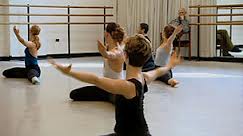 On that night I struggled to keep my weary muscles in line. The music was surging, and the intensity of the dance was rising. It culminated in this modest, but so powerful, shift of the body. Something peaked in me. The music and the movement were suddenly too hauntingly beautiful to tolerate. Too painfully gorgeous to share space in my soul with Nilsa’s death. Putrid secretions, purulent sores, bloated limbs, vomited blood: these were the cadences of Nilsa’s final hours. How could the beauty enveloping me now exist in the same universe with such agony? I could not contain them both. They ruptured inside as I melted onto the bare wooden floor, my hacking sobs a dissonant counterpoint to the music.
On that night I struggled to keep my weary muscles in line. The music was surging, and the intensity of the dance was rising. It culminated in this modest, but so powerful, shift of the body. Something peaked in me. The music and the movement were suddenly too hauntingly beautiful to tolerate. Too painfully gorgeous to share space in my soul with Nilsa’s death. Putrid secretions, purulent sores, bloated limbs, vomited blood: these were the cadences of Nilsa’s final hours. How could the beauty enveloping me now exist in the same universe with such agony? I could not contain them both. They ruptured inside as I melted onto the bare wooden floor, my hacking sobs a dissonant counterpoint to the music.
Medical training is, in many ways, like a disease. Over the course of medical history, treatments have been devised to rescue patients from other fatal diseases: Patients with hemophilia are kept alive with repeated infusion of a crucial clotting factor into their veins. Patients with sickle cell disease require red-cell transfusions to stay alive. Patients with end-stage renal disease are kept alive with dialysis.
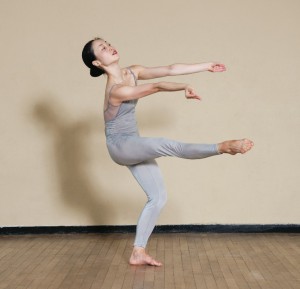 There are numerous pathologies in the disease of medical training—sleep deprivation, over-burdened interns, error-prone systems, social isolation, debasing hierarchy. Many of these pathologies have begun to be addressed, but I discovered that there was another that had not (yet) been the subject of a blue-ribbon commission or a well-publicized lawsuit—the absence of beauty. Perhaps in the grand scheme of the scourges of residency, this seems like only a minor misery. But for me, it took a palpable toll, one that I wasn’t even aware of until the “treatment” starting helping me. I look back now and realized that it was the continual infusion of the aesthetics of dance that helped keep me alive throughout those draining years. After each daily dose of agony and suffering, I needed not only to witness beauty, but to participate in beauty. I was well aware that I couldn’t possibly approach the feats of the advanced dancers, but that turned out not to matter at all. It was enough just to be a bit player in that world, to be a miniscule stitch in that weave of beauty.
There are numerous pathologies in the disease of medical training—sleep deprivation, over-burdened interns, error-prone systems, social isolation, debasing hierarchy. Many of these pathologies have begun to be addressed, but I discovered that there was another that had not (yet) been the subject of a blue-ribbon commission or a well-publicized lawsuit—the absence of beauty. Perhaps in the grand scheme of the scourges of residency, this seems like only a minor misery. But for me, it took a palpable toll, one that I wasn’t even aware of until the “treatment” starting helping me. I look back now and realized that it was the continual infusion of the aesthetics of dance that helped keep me alive throughout those draining years. After each daily dose of agony and suffering, I needed not only to witness beauty, but to participate in beauty. I was well aware that I couldn’t possibly approach the feats of the advanced dancers, but that turned out not to matter at all. It was enough just to be a bit player in that world, to be a miniscule stitch in that weave of beauty.
In figuring out what type of doctor I wanted to be, I had many earnest advisors in the medical field. They advised me about fellowships, practice settings, and academics. They tried to help me figure out whether I might be better suited to nephrology versus oncology, or academic medicine versus private practice, but to me these didn’t feel like the pressing questions. I’d happily have rolled a pair of dice, and I knew that I could make myself comfortable in any field.
It was the addition of dance to my medical training, it seemed, that informed my career path more than all of that well-meaning but ultimately inadequate advice. Somehow, I would have to shape my medical life so that it would encompass the arts and the humanities. This was a radical departure not only from my colleagues, but also from my academic career thus far. I’d been on the straight and narrow scientific path ever since I’d wanted to be veterinarian in elementary school. I could never have imagined that the squishy arts might occupy a front row seat next the hard sciences. But then again, I didn’t plan this path; it just unfurled itself this way.
 Dance followed my medical career for many years, and the Martha Graham School was an integral part of my life. After I had children, the logistics of evening classes became impossible. But during some travels after residency finished, I’d started jotting down my medical experiences. This grew into a stronger focus as I began to take writing classes. Eventually I gathered my writings into two books. Later, I helped start the Bellevue Literary Review, and found myself knee-deep in poetry, short stories, and essays between my clinic sessions. I started handing out poems to unsuspecting interns, elevator-reading to break the monotony of medicine.
Dance followed my medical career for many years, and the Martha Graham School was an integral part of my life. After I had children, the logistics of evening classes became impossible. But during some travels after residency finished, I’d started jotting down my medical experiences. This grew into a stronger focus as I began to take writing classes. Eventually I gathered my writings into two books. Later, I helped start the Bellevue Literary Review, and found myself knee-deep in poetry, short stories, and essays between my clinic sessions. I started handing out poems to unsuspecting interns, elevator-reading to break the monotony of medicine.
 When my daughter started violin lessons, I matter-of-factly asked the teacher how best to encourage practicing. She shrugged and replied that it often helped for kids to see their parents play music. A week later I purchased a student cello and started lessons. What began as a parental exercise in pedagogy quickly became a passion, and I found myself studying music more intensively than I’d ever studied for my medical boards.
When my daughter started violin lessons, I matter-of-factly asked the teacher how best to encourage practicing. She shrugged and replied that it often helped for kids to see their parents play music. A week later I purchased a student cello and started lessons. What began as a parental exercise in pedagogy quickly became a passion, and I found myself studying music more intensively than I’d ever studied for my medical boards.
Looking backward at the hodgepodge of unplanned dance, literature, and music in my life, I realize that I can’t be a doctor without this creative aspect, despite remaining a forever amateur in each field. The middle of my residency was as close as I’d ever come to drowning in the morass of medicine. Like the two serpents entwined in the medical caduceus symbol, like partners in the pas de deux, I somehow need both to be whole.
 There are times, as I slog through this messy business of illness and dying, that I fantasize about the beautiful world of dance, where the only concerns are the clean architectural lines of the body and the aesthetic qualities of the movement. I know that a professional artistic career is far more arduous than I could possibly contemplate, but from the medical trenches it shimmers seductively.
There are times, as I slog through this messy business of illness and dying, that I fantasize about the beautiful world of dance, where the only concerns are the clean architectural lines of the body and the aesthetic qualities of the movement. I know that a professional artistic career is far more arduous than I could possibly contemplate, but from the medical trenches it shimmers seductively.
It seems no accident to me that the ritual healings of many societies have involved dance. There is a physical intimacy of healing that has been recognized for thousands of years. This has been diminished in modern times due to the myriad diagnostic tools of modern medicine, but it doggedly persists. The physical exam might be described as is its own pas de deux between doctor and patient; medical visits that lack a physical exam often leave patients feeling as though something is missing. I am no Luddite, and I would certainly feel bereft without MRIs and computerized medical databases, but I am repeatedly impressed by the power of connection that occurs via touch. The laying on of the hands represents the unalloyed physicality of medicine that is a resonant partner with dance.
Sometimes, in the midst of a busy day, when my frustration is rising and the sense of being overwhelmed is threatening to choke me, I’ll suddenly notice that my feet have crept into fifth position. My body will unconsciously realign itself, shifting my upper body to balance against my lower, unfurling a breath that sheds some of the accumulated angst. I’ll often feel compelled to reach over and touch my patient on the arm, and then I’ll feel my mind begin to unsnarl. I can sense it beginning to clear, just enough to focus on what the patient is saying, just enough to connect to the person who is sharing this space and this moment with me. For we are nothing if not partners in an intimate dance.
**************
This essay appears in the anthology “Becoming a Doctor,” edited by Lee Gutkind. (Norton, 2010)
